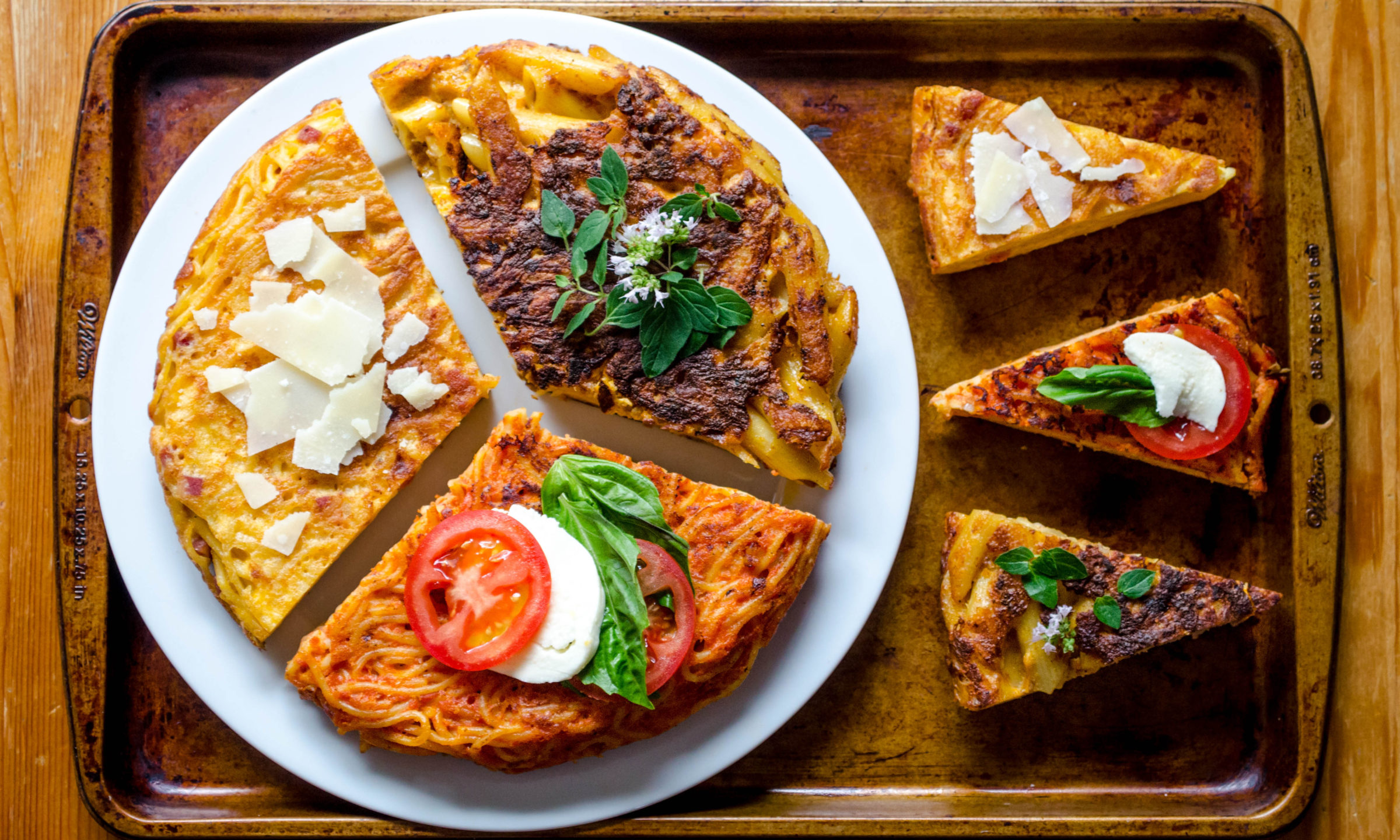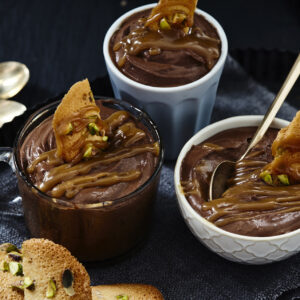Servings7
Time to Cook10 minutes
Time to Prepare10 minutes
Turn leftover pasta into a delightfully simple, perfectly delicious frittata with eggs, cheese, and optional add-ins. Frittata di pasta (aka frittata di maccheroni) is great hot or cold, and makes a great portable meal.
We have three variations for you to try, but as with all frittatas you can be creative with ingredients you have on-hand.
Ingredients
- 5 large eggs
- 15 oz cooked pasta (see note)
- 1.5 oz Parmigiano-Reggiano cheese (about 1/2 cup grated),
- plus extra to serve
- 2 tbsp butter softened
- salt to taste
- pepper to taste
- 2 tbsp olive oil
- 1/4 cup milk optional (see note)
Version 1 - "Classico"
- 3.5 oz pancetta diced and fried (or cooked bacon)
- 1.75 oz mozzarella or caciocavallo, or similar, cubed
Version 2 - "Al Sugo"
- 8 oz pomodoro sauce or marinara, or other tomato sauce
- 1 large fresh tomato diced
- basil to serve
- fresh mozzarella to serve
Version 3 - "Ragù"
- 8 oz meat sauce (ragù bolognese)
- fresh oregano to serve
Instructions
If you’re following one of the variations below, be sure to read it before proceeding.
- Mix the eggs, Parmesan, butter, salt & pepper thoroughly in a large bowl. If you’re using day-old pasta, add the milk as well (see note).
- Add the pasta to the mixture and toss thoroughly to combine.
- Heat about 1 tbsp of oil in a medium frying pan. Add the pasta and egg mixture to the pan. Fry over medium heat until relatively well-set and golden on the bottom (6-7 minutes).
- Carefully transfer the partially cooked frittata to a large plate (cooked side down). Add the remaining oil to the empty pan. Flip the frittata over onto another second plate, and transfer back into pan, uncooked side down. Cook for an additional for 4-5 minutes.
- Remove the finished frittata from the pan and set aside to cool. Serve warm, or at room temperature.
Version 1 - "Classico"
- Follow the steps for the basic recipe, but mix the mozzarella and cooked pancetta into the pasta before frying. Alternatively, add half of the pasta/egg mixture to the pan, then add the cheese and pancetta in a single layer before adding the remaining pasta. Serve with extra Parmigiano-Reggiano cheese.
Version 2 - "Al Sugo"
- Follow the steps for the basic recipe, but mix the pomodoro into the pasta before frying. You may want to reduce the heat a little bit, as the tomato sauce can scorch a bit more easily than some of the other ingredients. Top the finished frittata with diced tomato, basil, and fresh mozzarella before serving.
Version 3 - "Ragù"
- Follow the steps for the basic recipe, but mix the meat sauce into the pasta before frying. Top the finished frittata with fresh oregano and extra parmigiano-reggiano cheese.
Notes
Pasta Note – You can use virtually any type of pasta here, though spaghetti is fairly traditional and easy to work with. Regardless of the type of pasta you use, it’s important that it’s not overcooked. In fact, I actually like to use pasta that’s cooked just a bit less than al dente, as it will continue to absorb liquid and cook a bit more in the frittata. Note that this recipe specifies 15 oz (425 g) of COOKED pasta, not dry! This is corresponds to (approximately) 7 oz (180-200 g) of dry pasta
Milk Note – I recommend adding the milk only if you’re using day-old pasta, which tends to a be a bit dryer and stiffer than freshly made.

